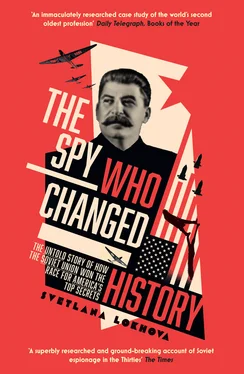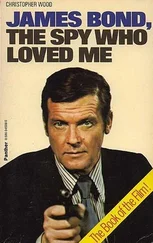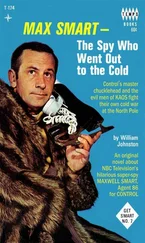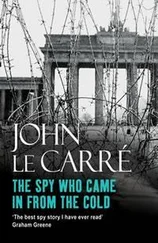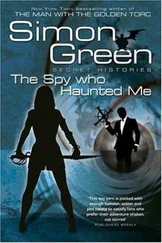In 1931 a small number of Soviet secret agents infiltrated America to live their lives in the shadows. This is the story of how that long mission first began and how the prestigious Massachusetts Institute of Technology became the greatest, if unwitting, finishing school for Soviet spies – the alma mater of intelligence officers more talented and remarkable than the Cambridge Five traitors Philby, Burgess, Maclean et al. Without the fruits of the spies’ work – the astounding number of technological and scientific secrets they smuggled out – it is hard to believe that the USSR would have prevailed against Nazi Germany or taken its place at the world’s top table.
The stream of intelligence helped prepare the Soviet Union’s armed forces and ready its industrial base for the trials of the Second World War and the Cold War. Across the battlefields of the Eastern Front and in its factories far behind the front lines, the USSR was able to grind Hitler’s previously invincible legions into dust. Defying all expectations, the ‘backward’ Soviet Union mass-produced more planes, tanks and guns than the invading Germans. The secret to crushing the Nazis was stolen American know-how.
By 1942, Stalin was looking beyond the defeat of Hitler and planning for the future defence of the Soviet Union. He sought to overtake his erstwhile Western allies on their home ground, technology. Spreading his net across both sides of the Atlantic in the first coordinated intercontinental espionage gathering operation in history, Stalin’s spies would break the US’s monopoly on the atomic bomb and the high-altitude bomber. These two astonishing technical achievements were completed in four years, less than half the time expected by the Americans.
The US’s global supremacy stemmed from its leadership in science and innovation. Its education system was the brain factory, at the centre of which lay its technical universities. Its economic success was founded on unrivalled techniques of quality mass production, the speed at which it transferred innovation from research centres to factory floors and on mass consumerism. In the 1940s, America’s factories outproduced the world both in terms of quality and quantity. Yet US defence policy relied on the technological sophistication and superiority of the weapons in its armoury, not the number of boots the army could deploy on the ground. In the late 1930s that superior weapon was believed to be the unerringly accurate Norden bomb sight. By the mid 1940s it would be the A-bomb.
The start of the Soviets’ long science and technology (S&T) mission to the US has remained unknown for over eighty years owing to the desire of Russian and US security services to keep their secrets. My sources include previously undiscovered Soviet-era documents that tell the story of the greatest triumph of Stalin’s secret services. As well as how they did it, this book reveals that Soviet intelligence began penetrating the United States ‘to catch up and overtake America’ not to undermine its system of government. The Soviets sought to learn from scientists and entrepreneurs how to industrialise the American way. To surpass the US, they needed to ‘combine American business quality with German attention to detail all on a Russian scale’. 3
Over the next five decades the Soviet S&T mission would evolve in its goals, intensity, scale and success, but the main task would be the US, ‘the most advanced country in S&T’, 4and the initial scientist-spies of the first operation would form the model. The mission’s high points were the penetration of the Manhattan Project and the building of the Tu-4 bomber. The first spies would be followed in the 1980s by trained ‘agents [who] were: Doctors of Science, qualified engineers specialising in atomic energy, radio electronics, aviation, chemistry, radars [focusing on] “brain centres”: scientific research institutes, universities, scientific societies’. 5These were the same targets that had been identified by the very first spy, Stanislav Shumovsky, in 1931. The skills that came naturally to him and those he learned on the job would form the basis of an entire KGB programme to train its brightest scientists for missions in the US.
This is the life story of the remarkable Stanislav Shumovsky, a man who changed history. As a young man, he served as a soldier. Against the odds he helped fight off the world’s great powers who sought to strangle Communism in the cradle. When unfit to fight, he used science and technology to transform the Soviet Union from a land with a few imported aircraft to an aviation superpower and an unlikely victor in the Second World War.
Shumovsky was probably the most successful and audacious aviation spy in Soviet history. Appropriately codenamed BLÉRIOT after the legendary French aviator, he provided the USSR with the means to build a modern strategic bomber, which was commissioned to carry the atomic bomb. Among his other notable successes while operating in America during the 1930s, Shumovsky escorted one of the world’s greatest aircraft designers, Andrey Tupolev, around dozens of key US aviation plants, research centres and universities. Along the way Shumovsky recruited as agents a generation of Americans working in the aviation industry (some from his own class at MIT) and filmed inside top-secret US defence plants. A master of public relations, he gave newspaper interviews and posed for photographs, hiding his activities in plain sight for years.
His model for the Soviet scientist-spy formed the key innovation in S&T espionage. Shumovsky would always consider himself an engineer capable of discussing aviation as an equal with the world’s leading experts of the time. He persuaded the NKVD to finance the education of several American recruits by paying their fees at a top university. This is the first evidence of Soviet intelligence investing in young individuals who would prove useful sources in later life. Shumovsky also vouched for and mentored four NKVD officers who enrolled at MIT to learn the skills necessary to continue acquiring technological secrets. The training enabled his protégés to secure the greatest prize of all, the atomic bomb. By 1944, the best Soviet assets of Operation ENORMOZ (their penetration of the Manhattan Project) on both sides of the Atlantic had all been recruited or were run by Shumovsky’s MIT alumni. Of the eighteen Soviet intelligence officers who worked on obtaining the secrets of the atomic bomb, the most senior were graduates of US universities.
Today, Shumovsky’s photograph deservedly hangs in the SVR (Russian Foreign Intelligence Service) Hall of Fame. In Washington and Moscow, the details of his career are still officially classified. Another photograph, taken in 1982 (see here), shows Professor Shumovsky in old age at home. Behind him, on a shelf in a glass cabinet filled with books, is a second photo, evidently a precious memento. It is the picture of a younger Stanislav in his MIT graduation gown, taken in the summer of 1934 on the lawns outside the Institute’s Building 10. The older, relaxed Professor Shumovsky can for the first time perhaps afford a broad smile in a photograph. He stares proudly at the camera, no doubt recalling how he achieved what Stalin had ordered of him all those years before: to provide the crucial information needed for his country’s survival.
To catch up and overtake America is no longer a Russian goal. Others now follow the trail trodden by the Soviets in the 1930s. Today, selling American education abroad is big business. Over a million foreign students are currently enrolled at US universities, around 5 per cent of the total. Disproportionately around a third of those take courses in science, computer technology, engineering and mathematics (STEM). A third of foreign students are Chinese who, according to a 2017 report in the New York Times , contribute an estimated $11.4 billion to the US economy. The advantage to America is that foreign students generally pay full price for their education, subsidising domestic students. Graduates from STEM fields are projected to play a key role in future US economic growth. There is a concern that with so many places taken up by foreign students there may not be enough domestic STEM graduates to meet future job demand. Another is that Chinese and Indian graduates will use their new skills to erode America’s treasured technological superiority. On 14 February 2018, Christopher Wray, head of the FBI, told Congress that ‘Chinese intelligence operatives are littered across US universities, possibly to obtain information in fields like technology. Schools have little understanding of this major predicament.’ Wray warned ‘the level of naivety on the part of the academic sector about this creates its own issues … They’re exploiting the very open research and development environment that we have, which we all revere. But they’re taking advantage of it.’ America remains trapped in a dilemma of fear and greed.
Читать дальше
